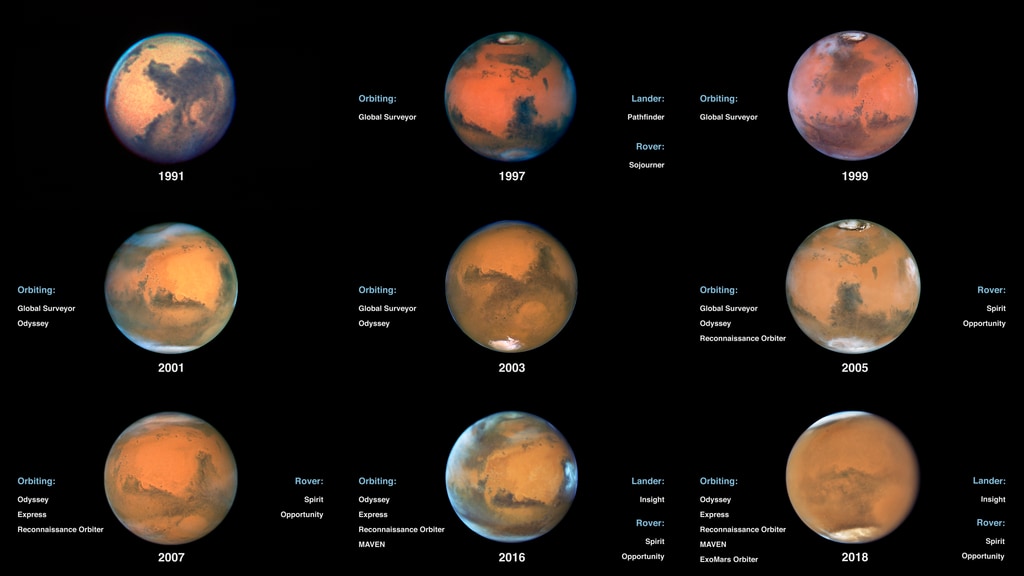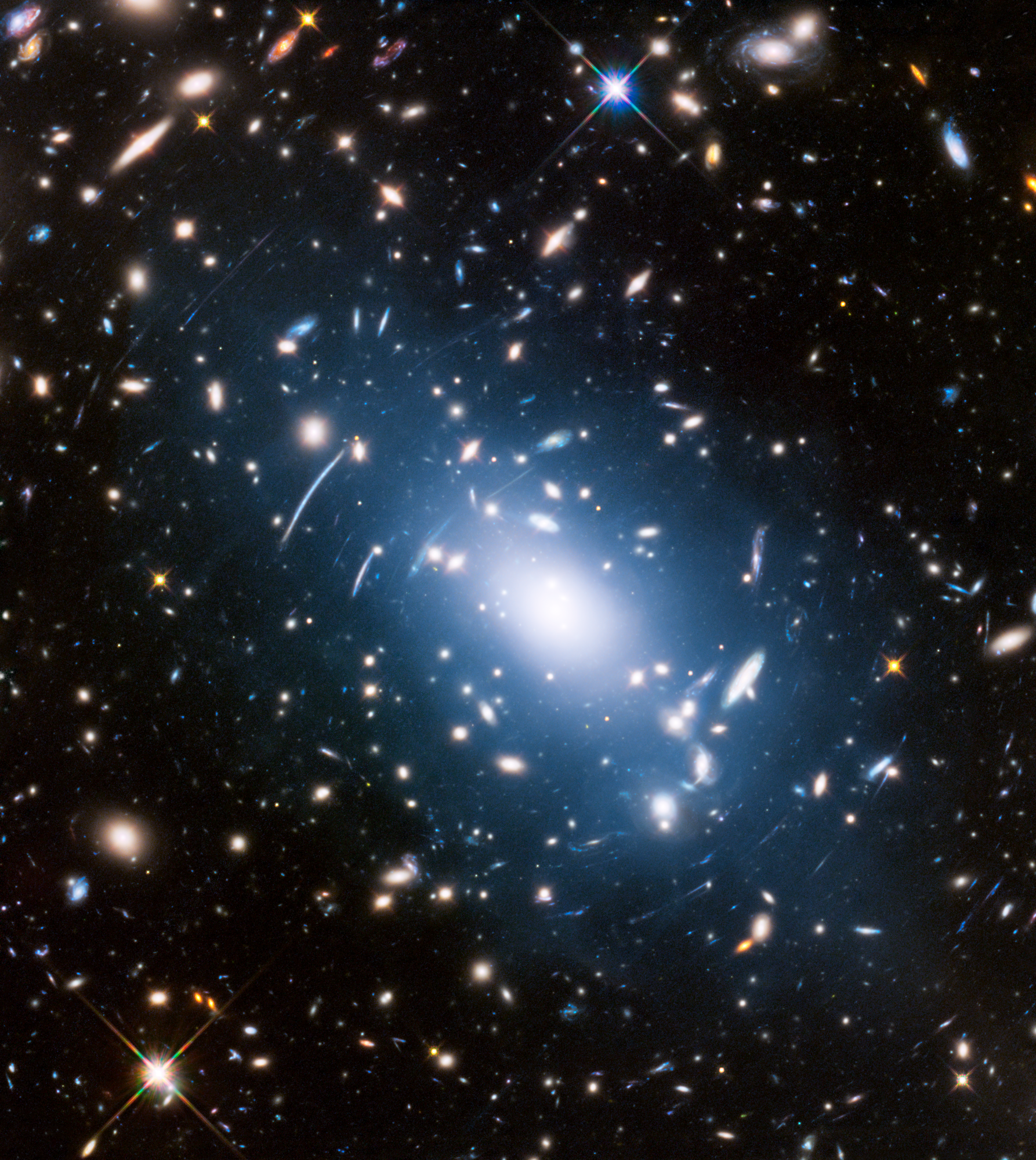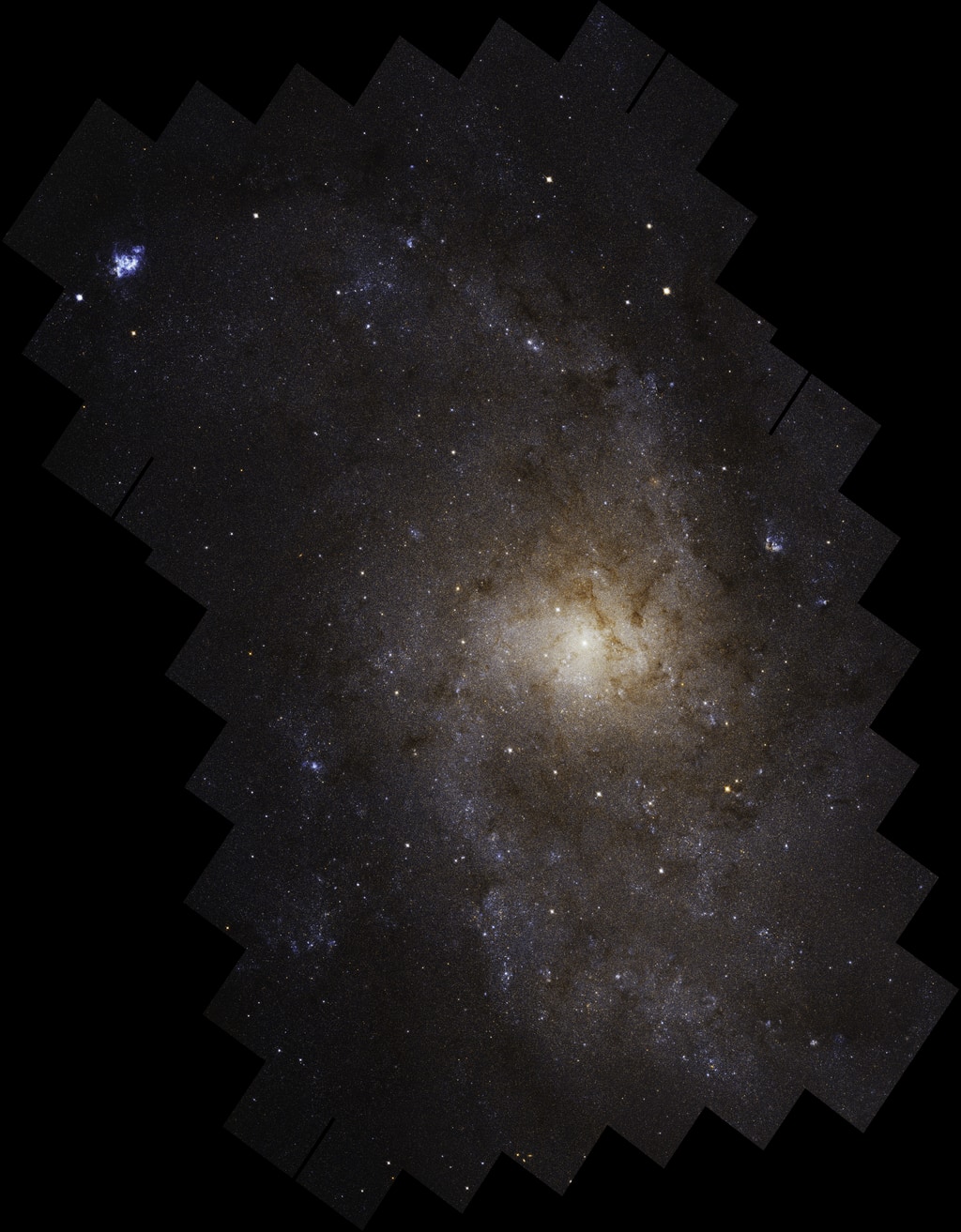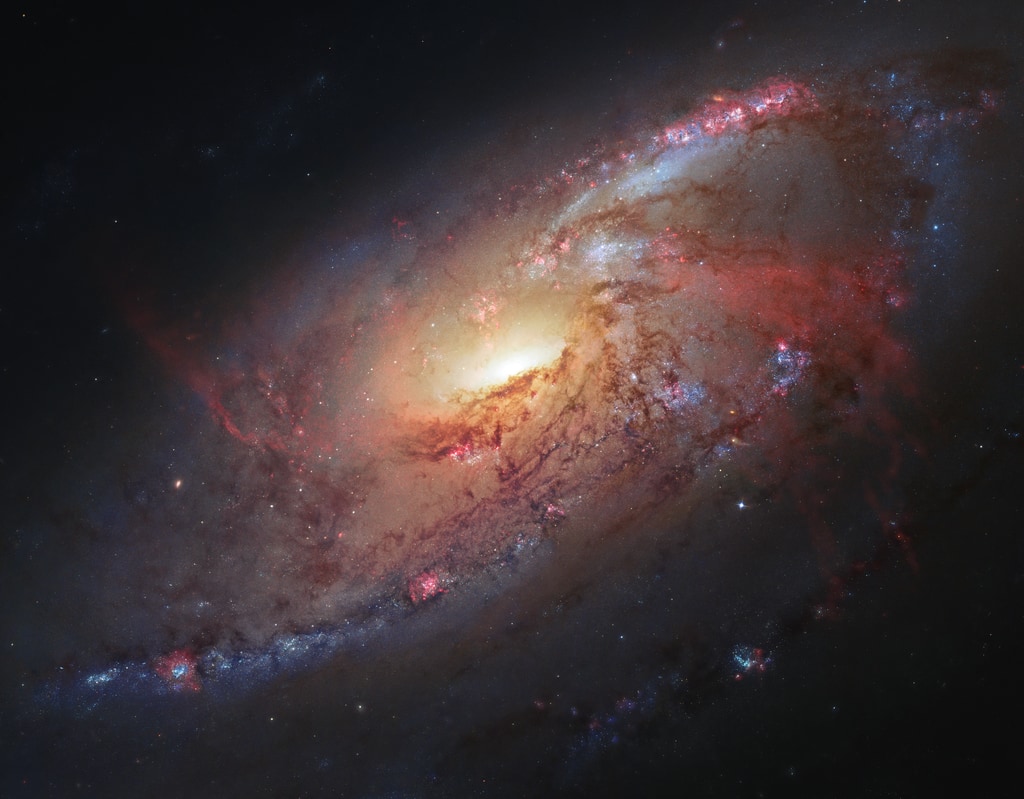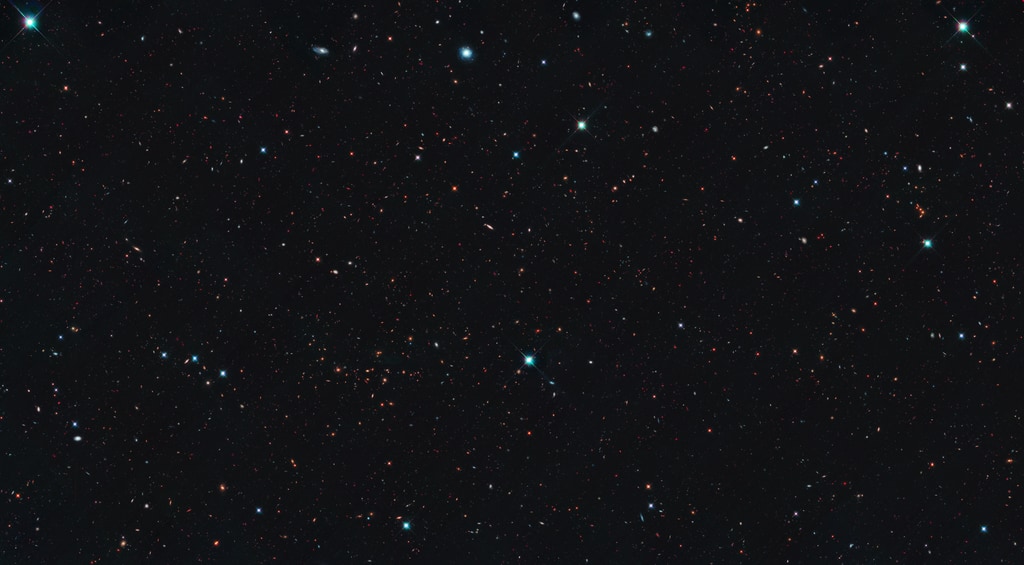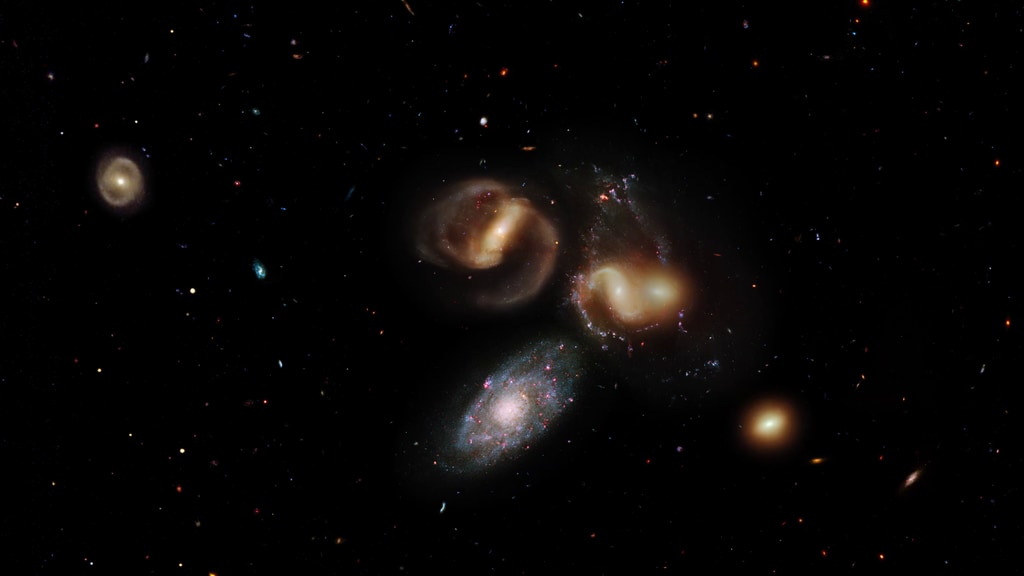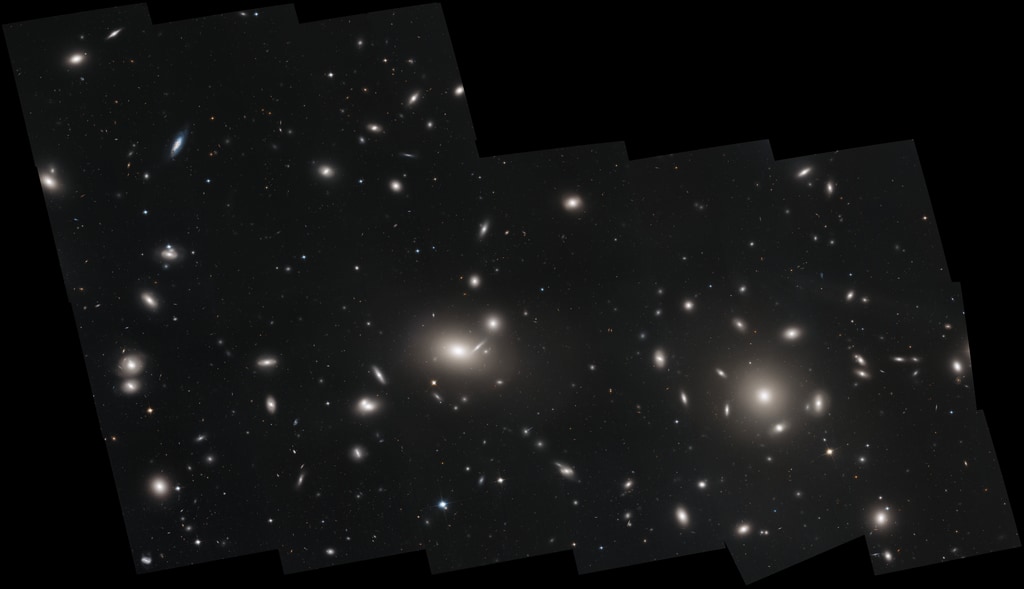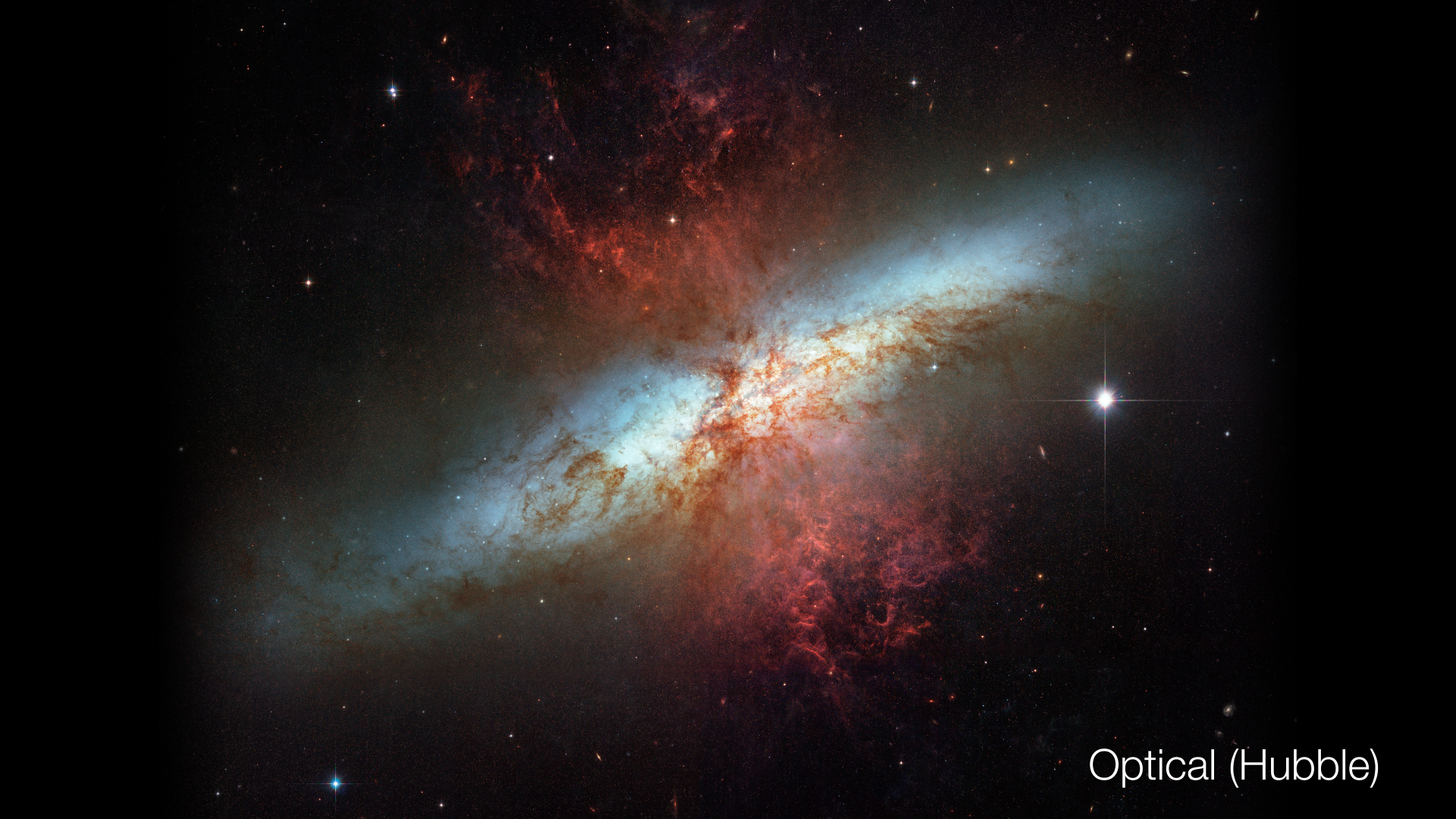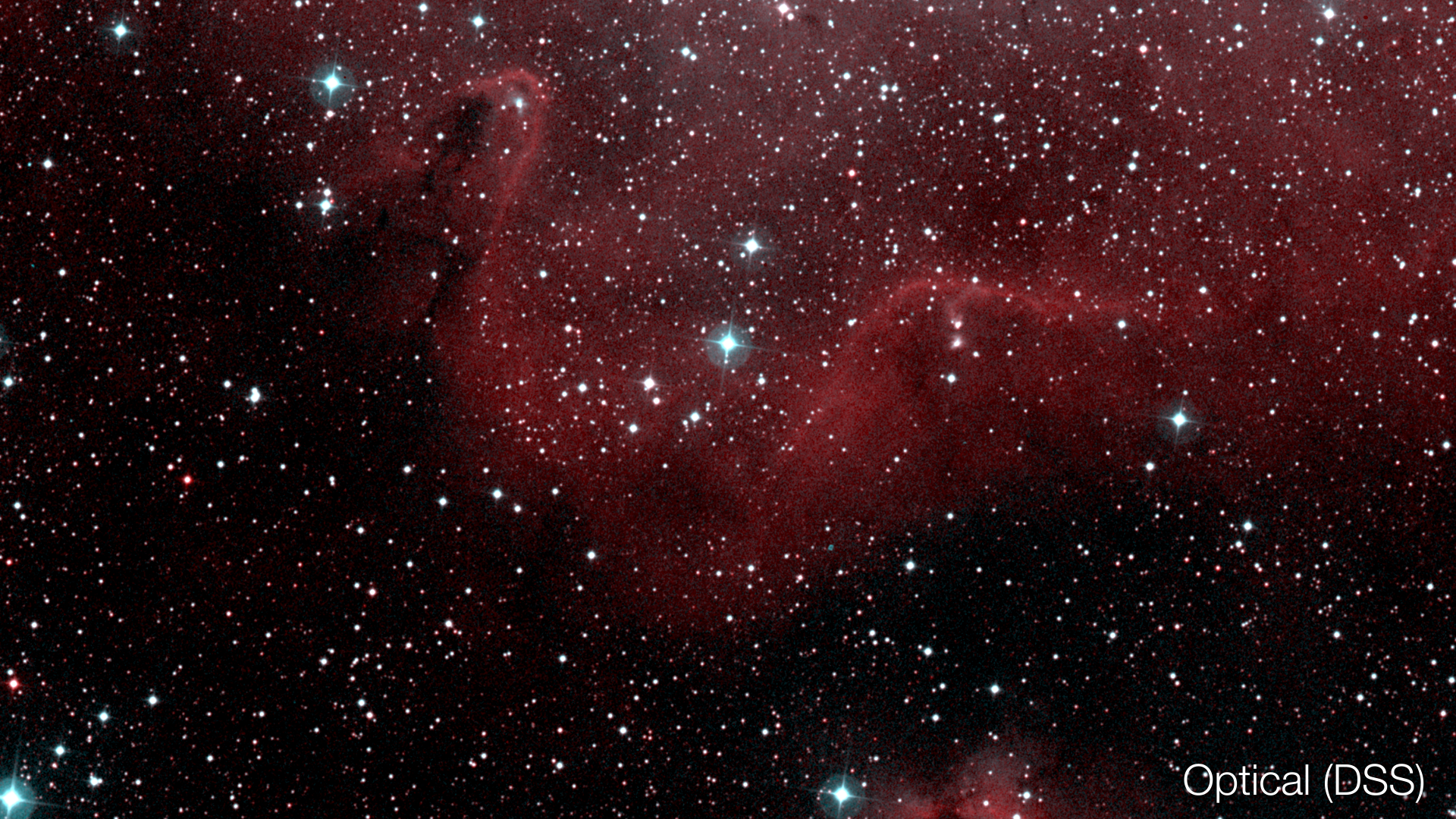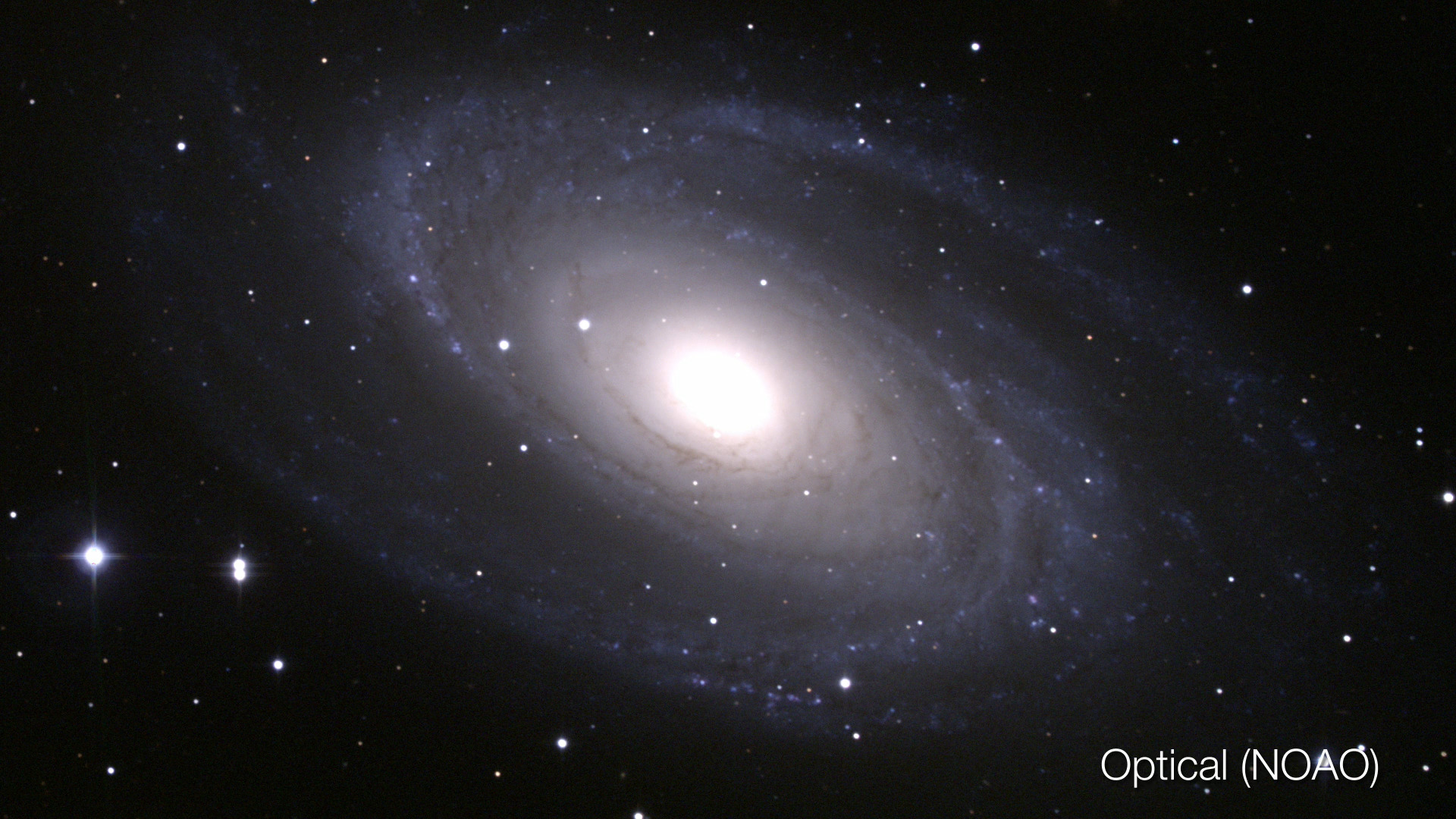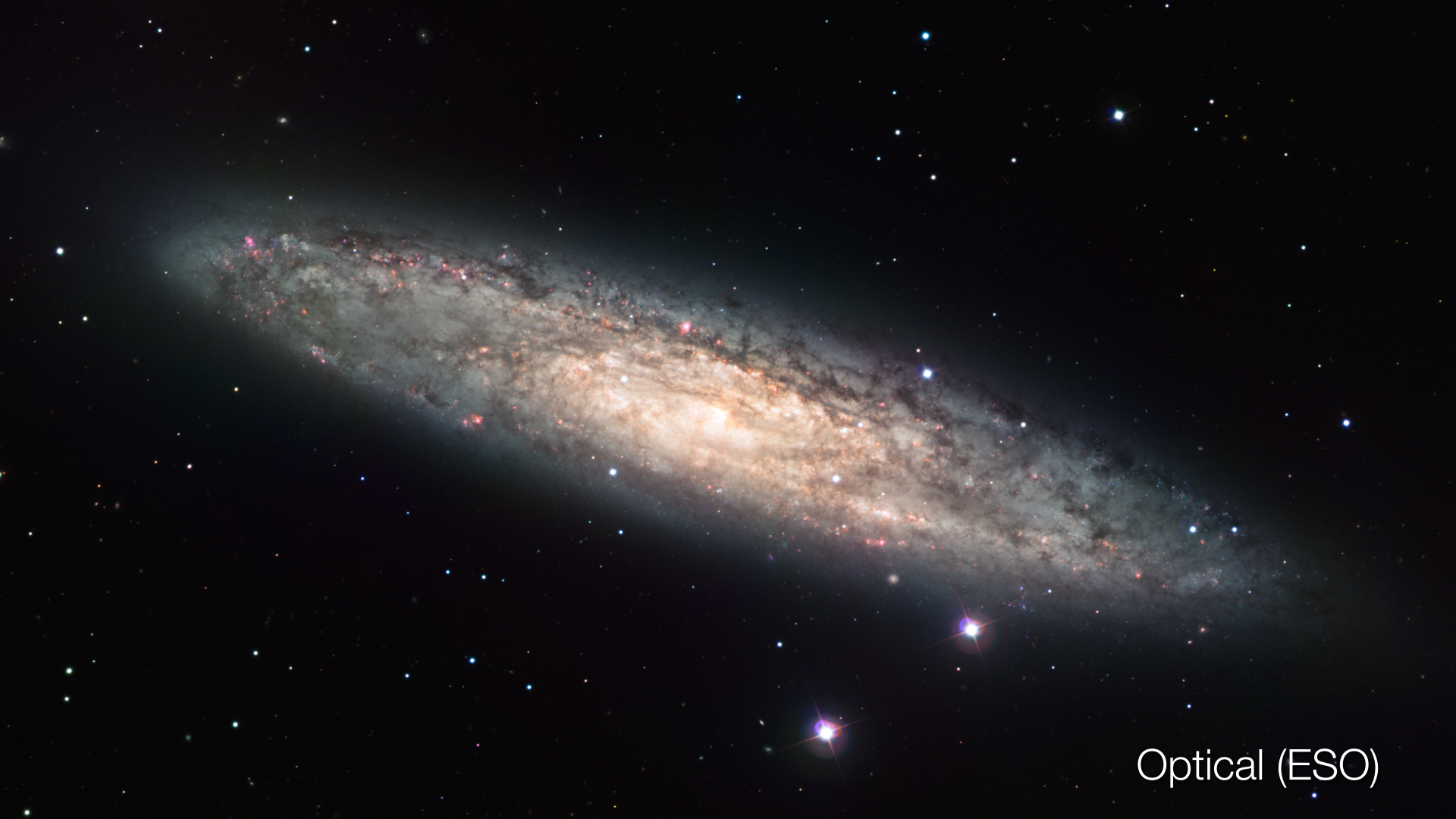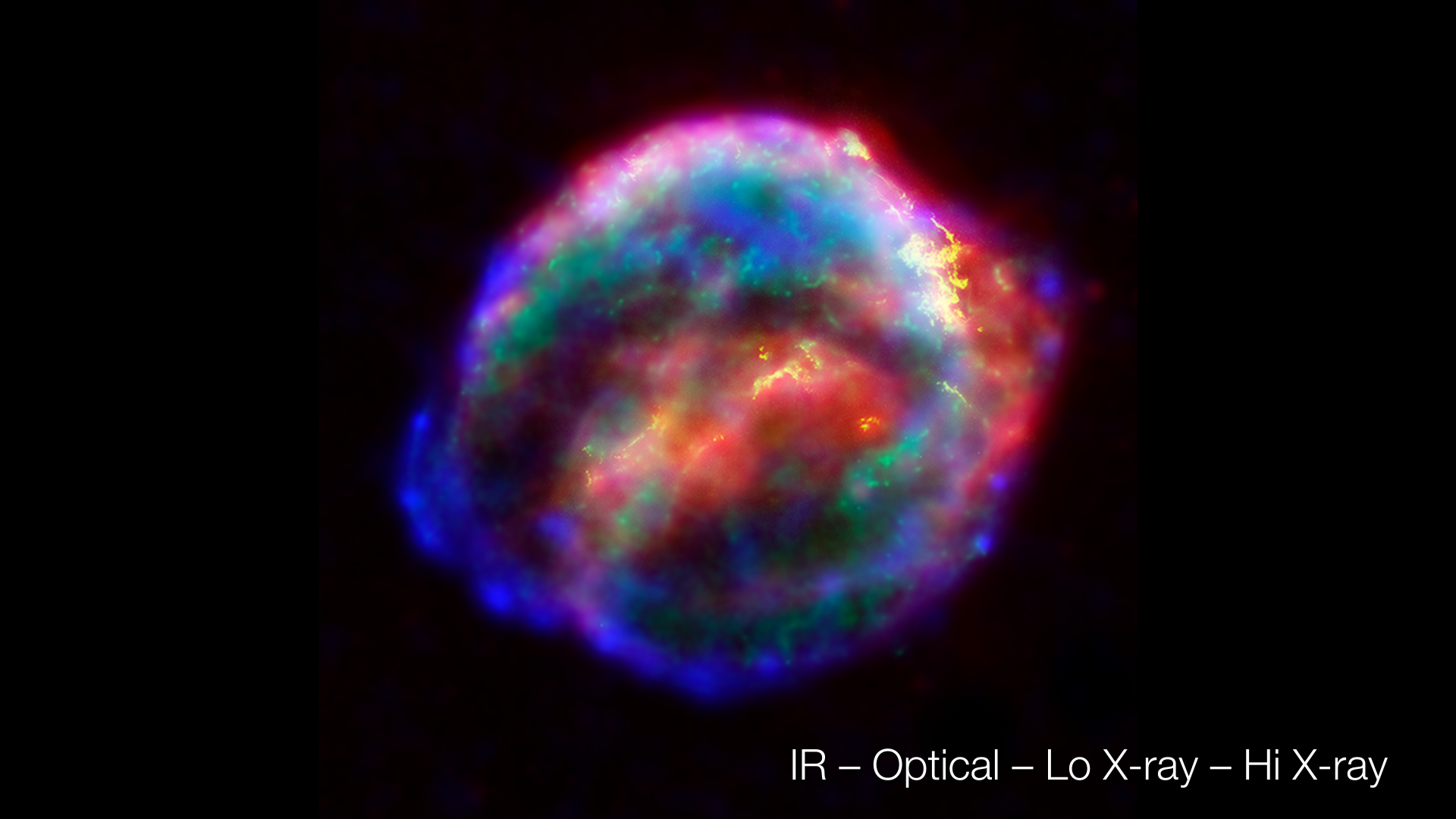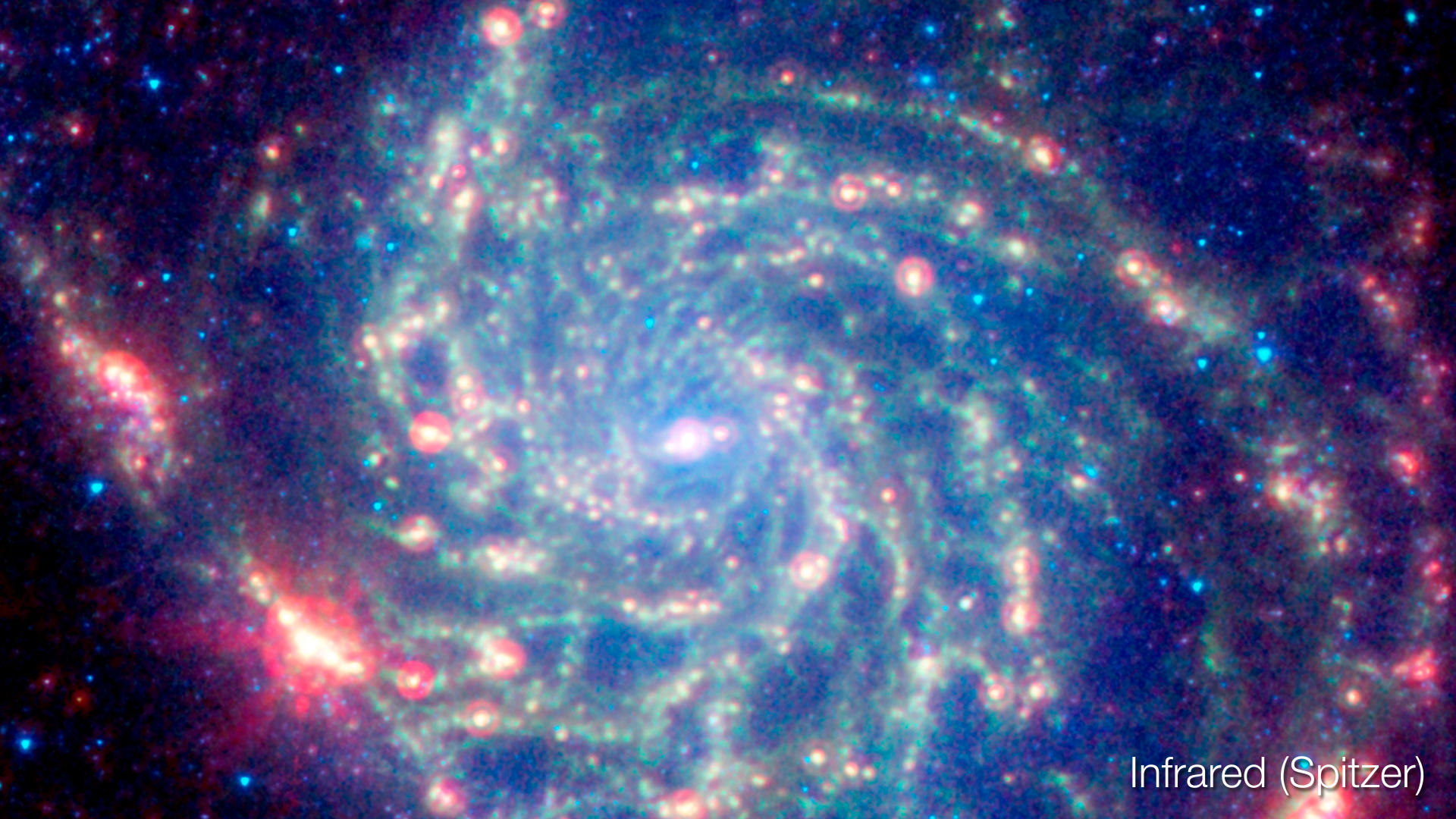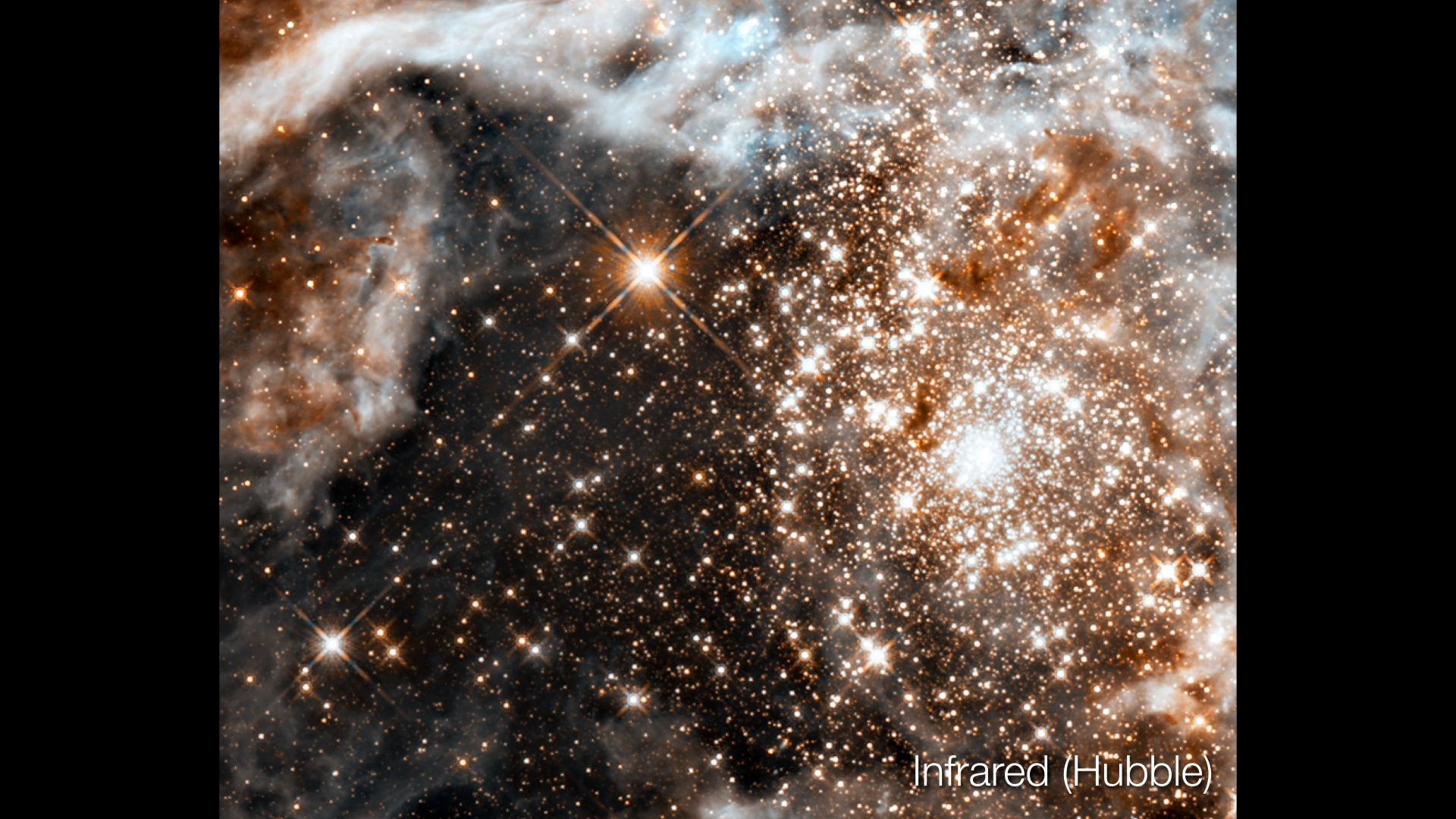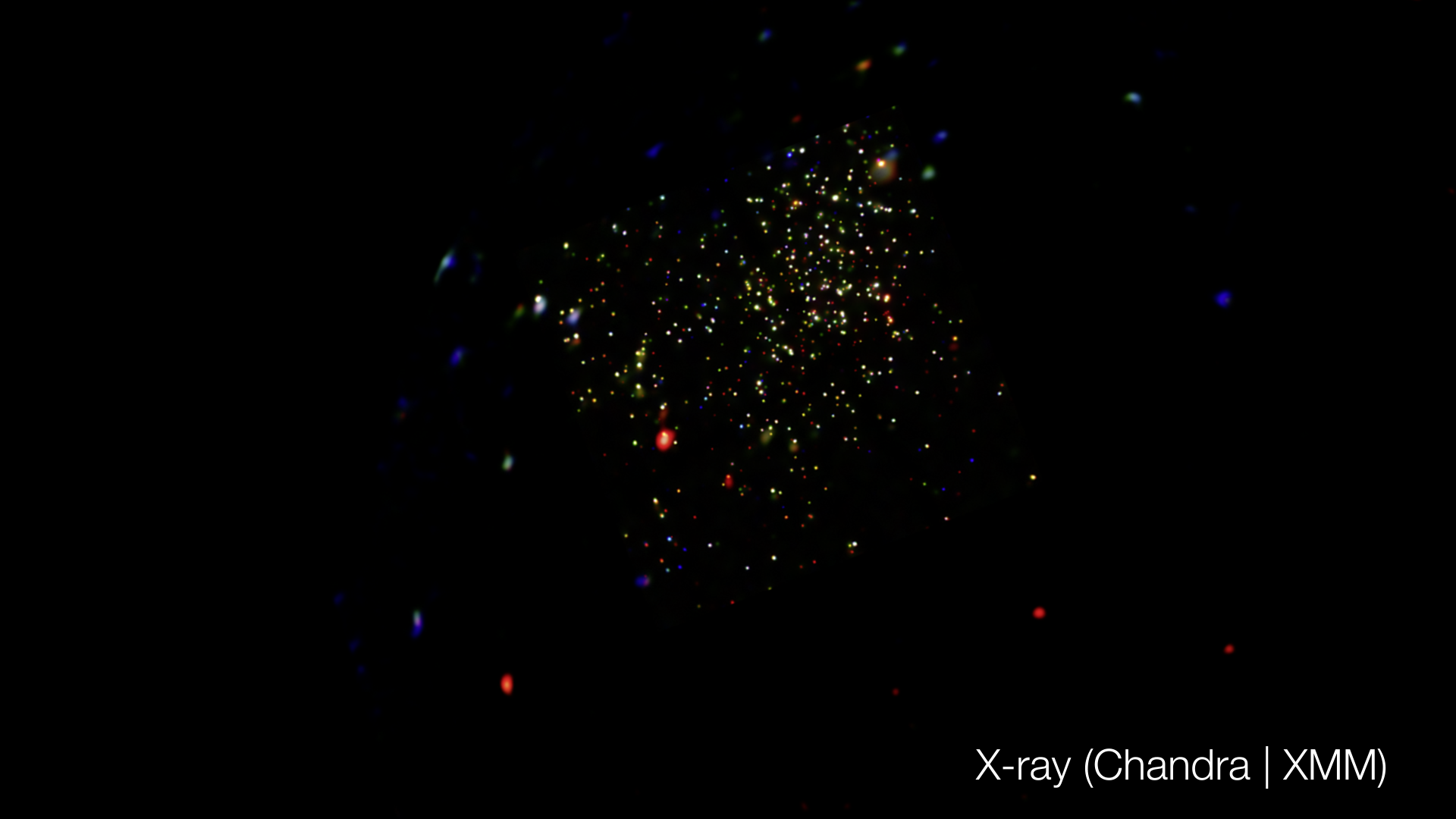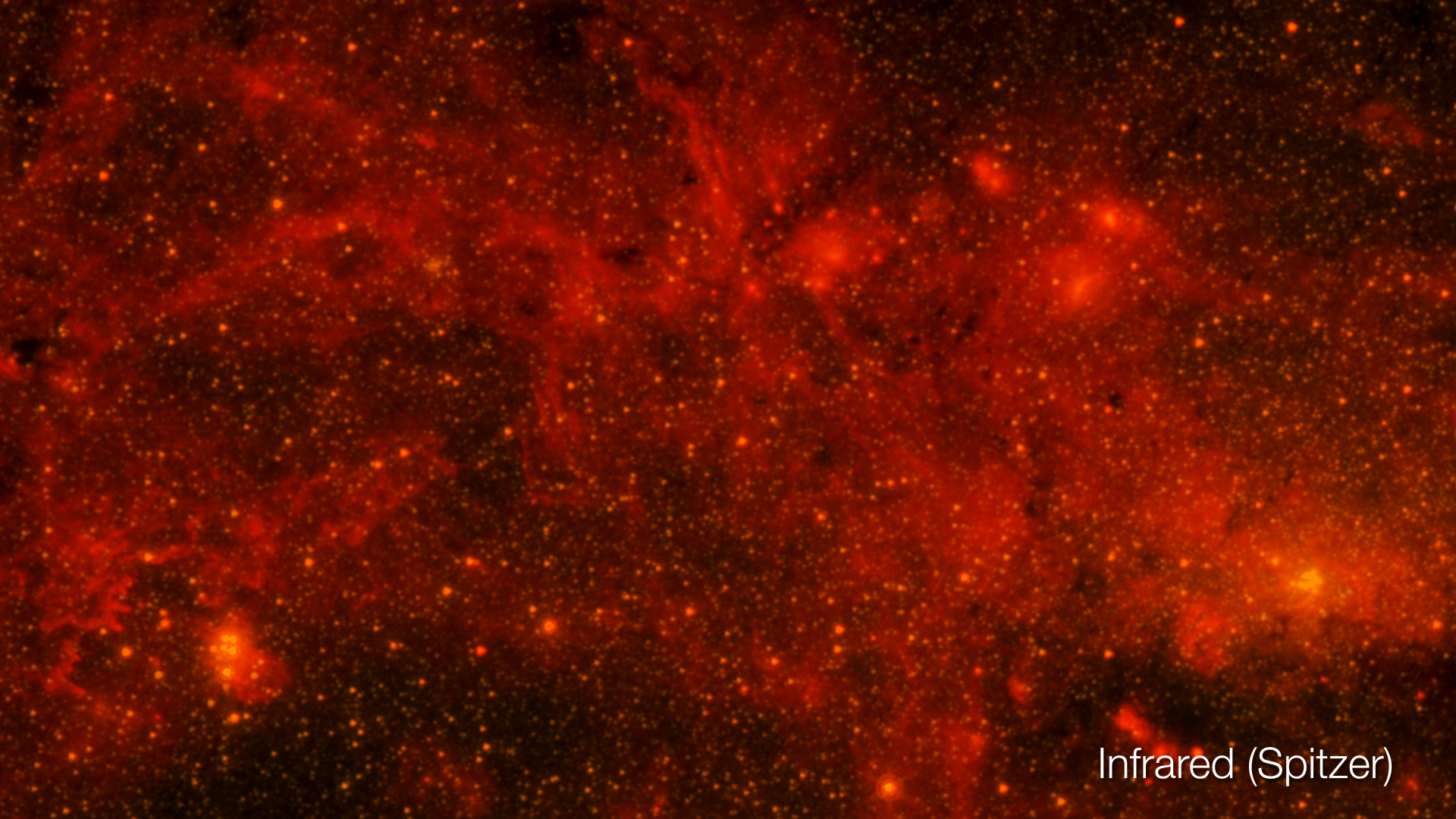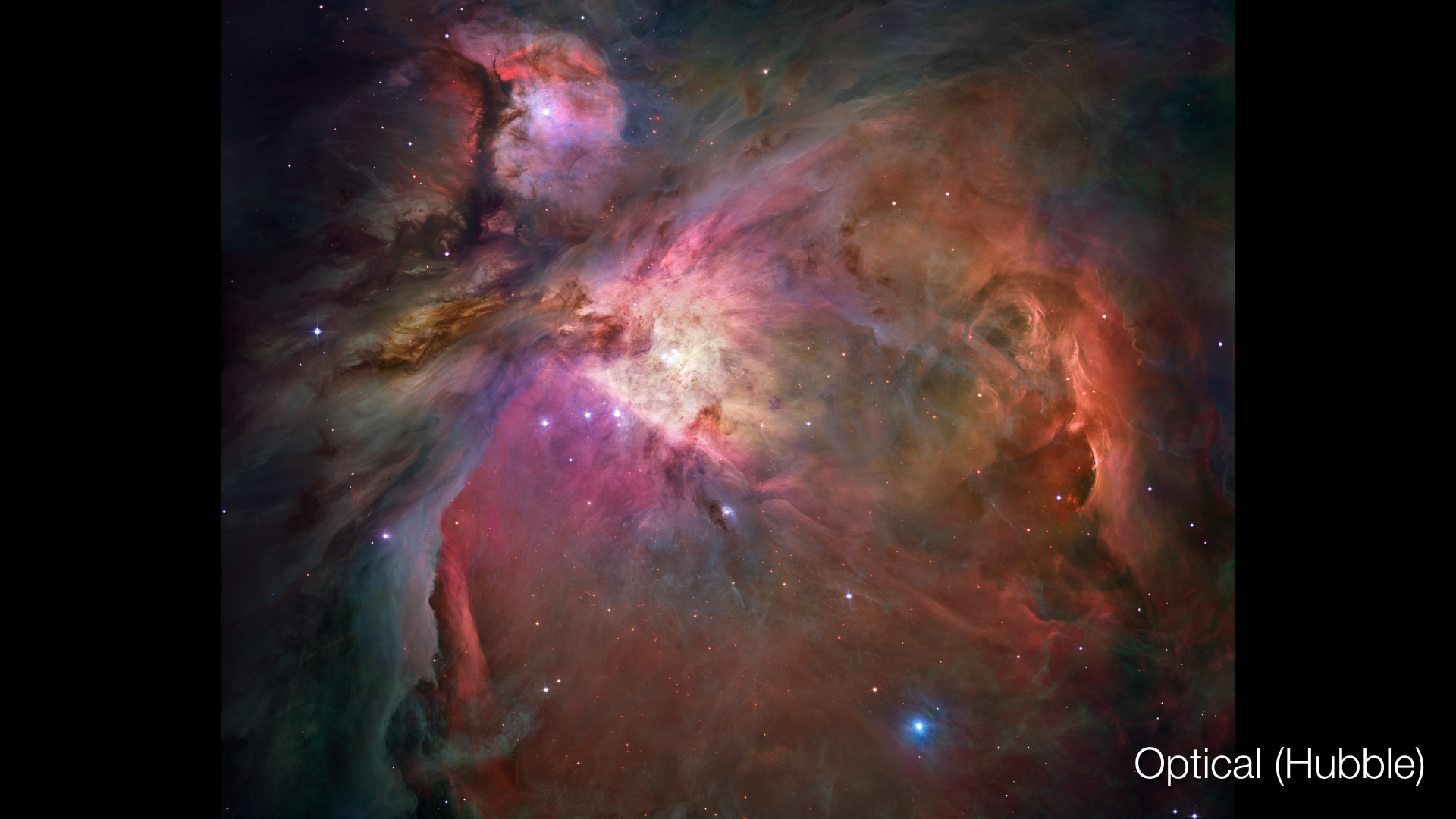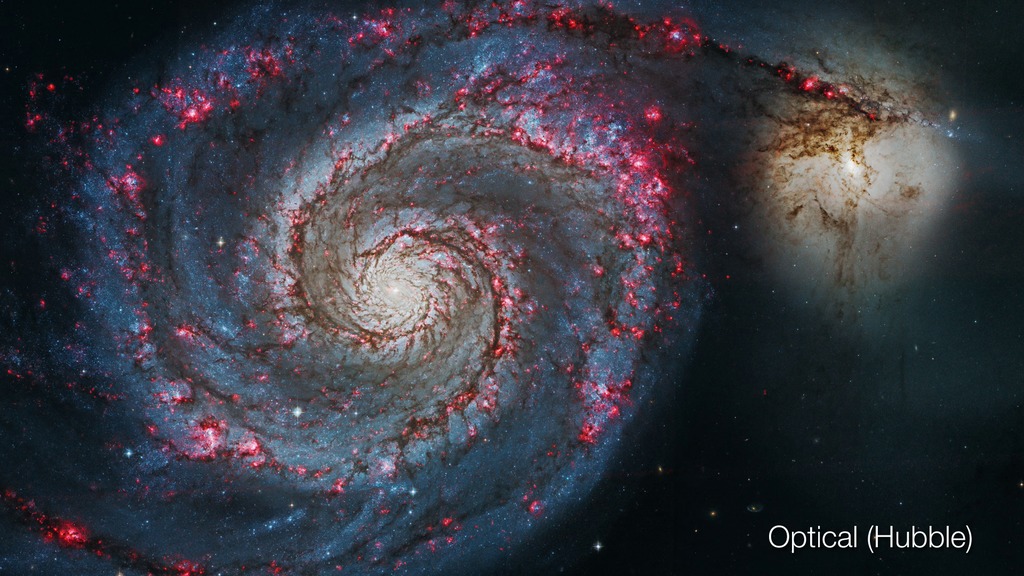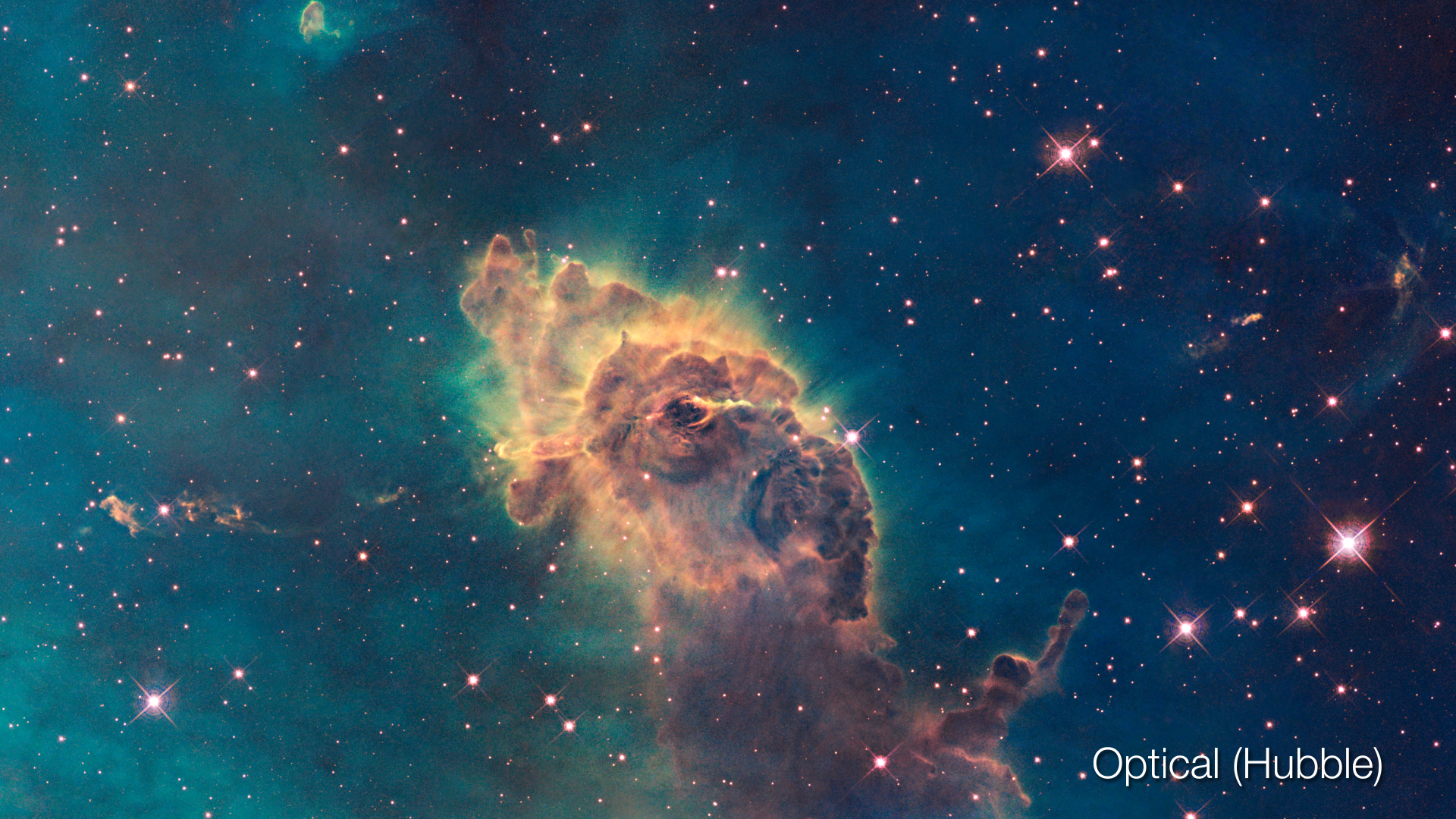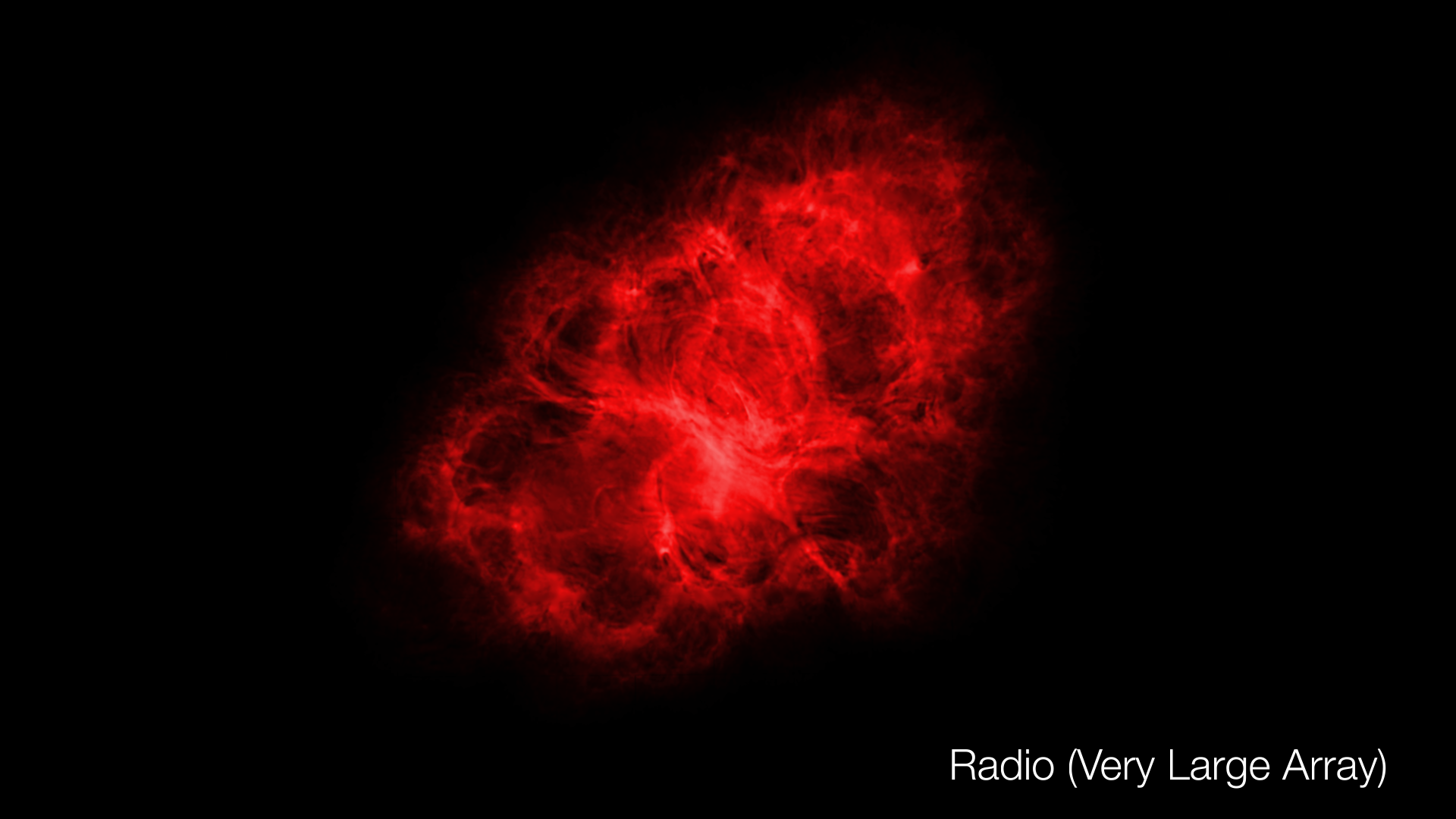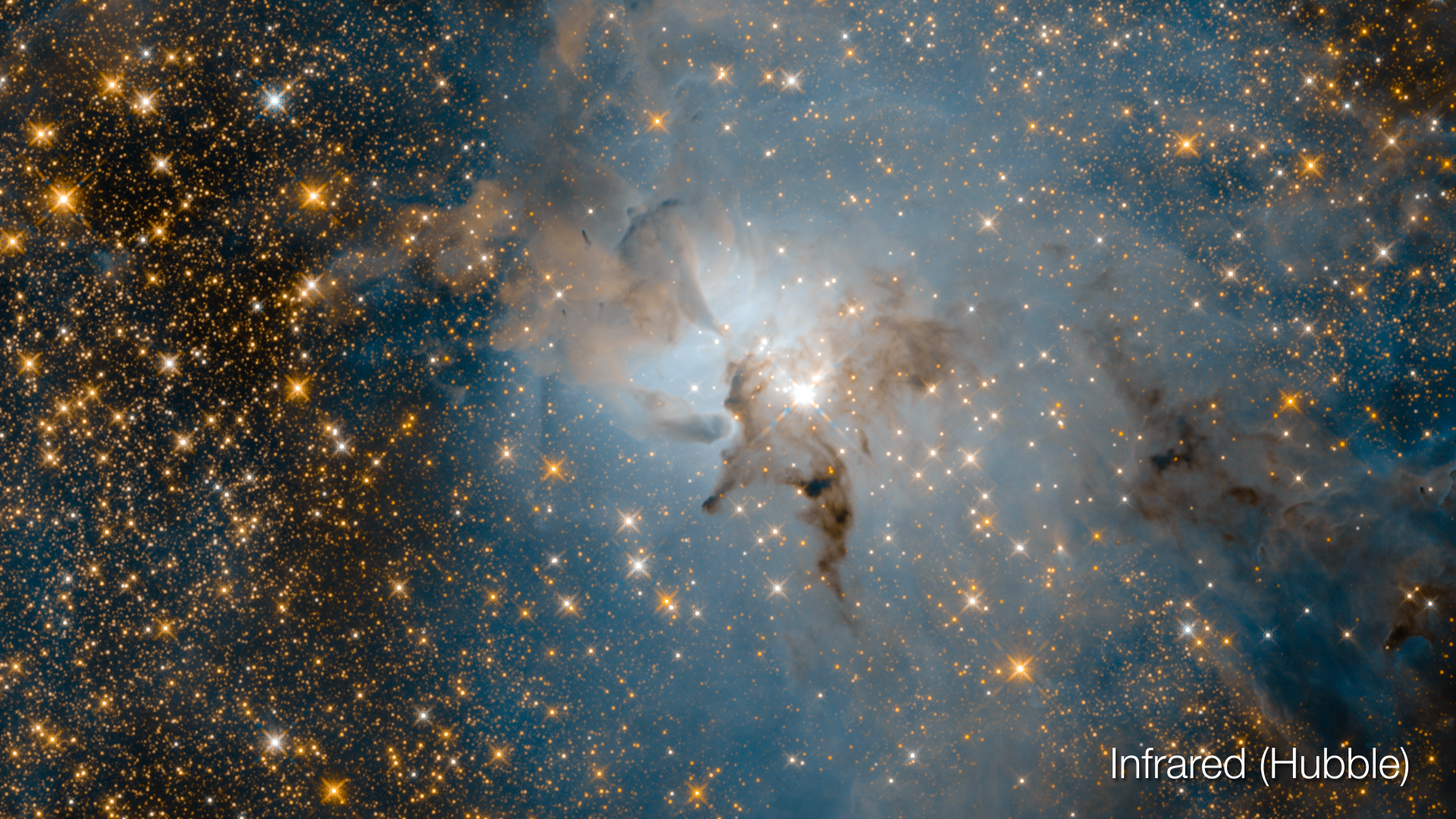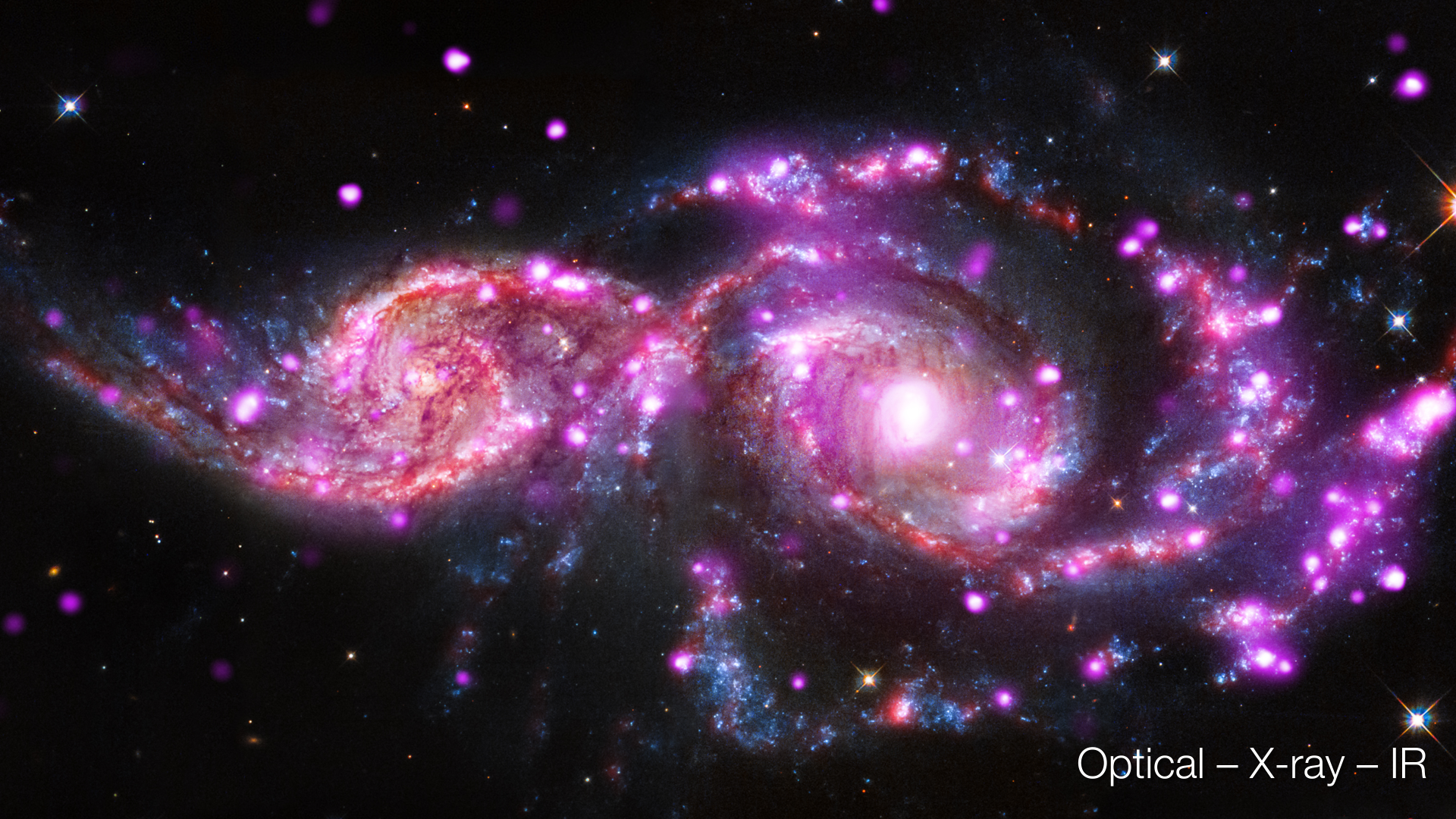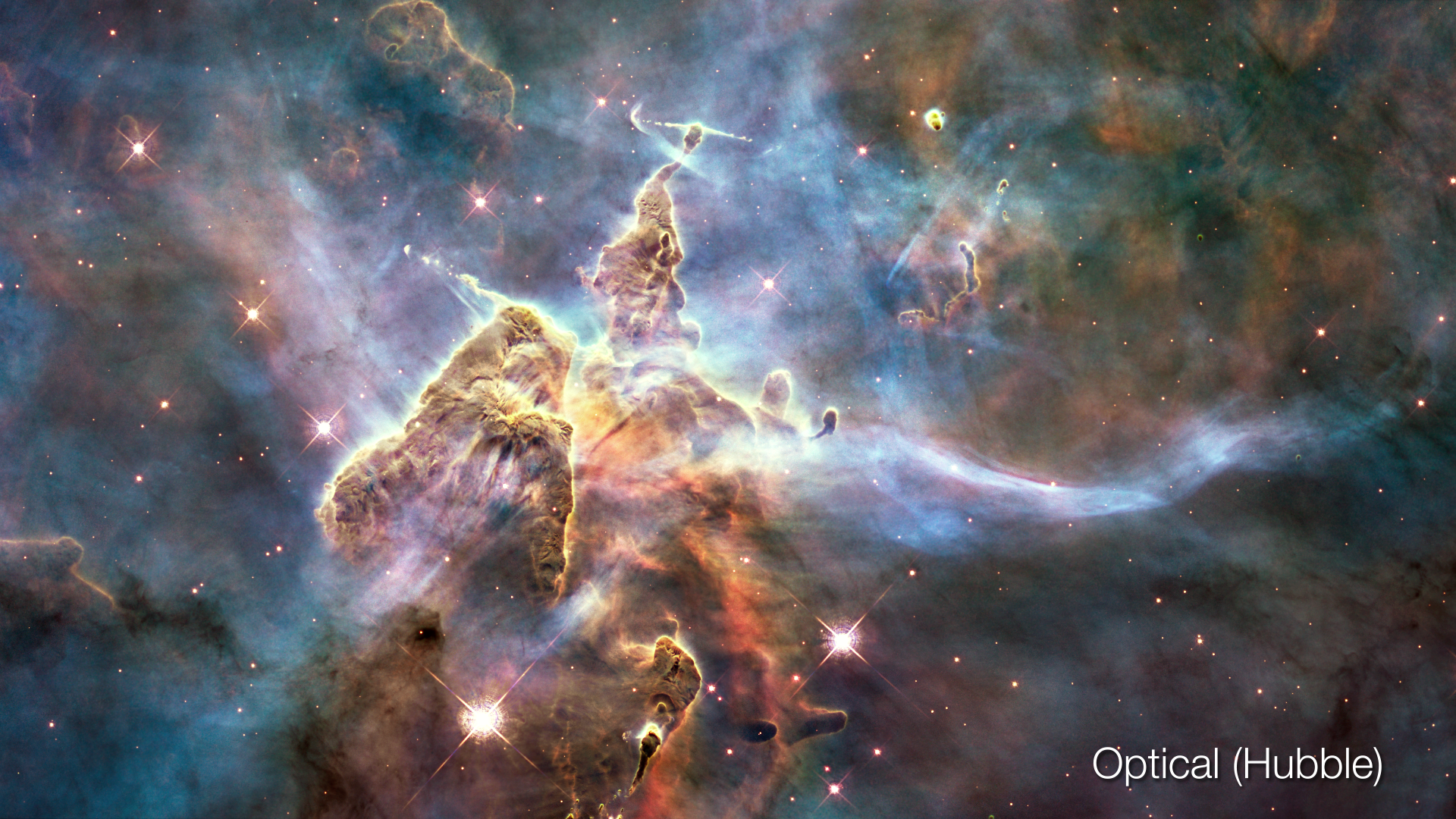Pillars of Creation: M16
This pair of images taken in 2014 reveal the Pillars of Creation in visible and near-infrared light, taken by the Hubble Space Telescope.
The Pillars of Creation (Eagle Nebula, or Messier 16) are a stellar nursery, composed of gas and dust slowly eaten away by massive stars that are off the far to the upper right corner of this image. The pillars are about 5 light-years tall in this image. Streamers of gas can be seen floating from the giant structures as intense radiation heats and evaporates them into space. Stars are being born inside the pillars due to the gas compressed into collapse by the powerful winds from the massive star cluster. The pillars are slowly being eroded but continue jutting out into the cleared region.
The first Hubble image shows the Pillars in visible light capturing the silhouette of the dark cloud. The second Hubble image shows the Pillars in the near-infrared light where the dust now appears transparent. This reveals the stars within and behind the cloud. The infrared. blue-colored glow shows the edges of the cloud that are partly illuminated by the stars that surround them. The yellow-color captures the dusty stars that are obscured in the visible light image.
This animation is the same as above, played twice as fast.

Optical image of M16 (portrait)

Optical image of M16 (landscape)

Infrared image of M16 (landscape)
Credits
Please give credit for this item to:
Videos: NASA, ESA, and G. Bacon (STScI)
Images: NASA, ESA, and the Hubble Heritage Team (STScI/AURA)
-
Visualizer
- Greg Bacon (STScI)
-
Technical support
- Leann Johnson (Global Science and Technology, Inc.)
Release date
This page was originally published on Monday, November 26, 2018.
This page was last updated on Monday, July 15, 2024 at 12:22 AM EDT.
